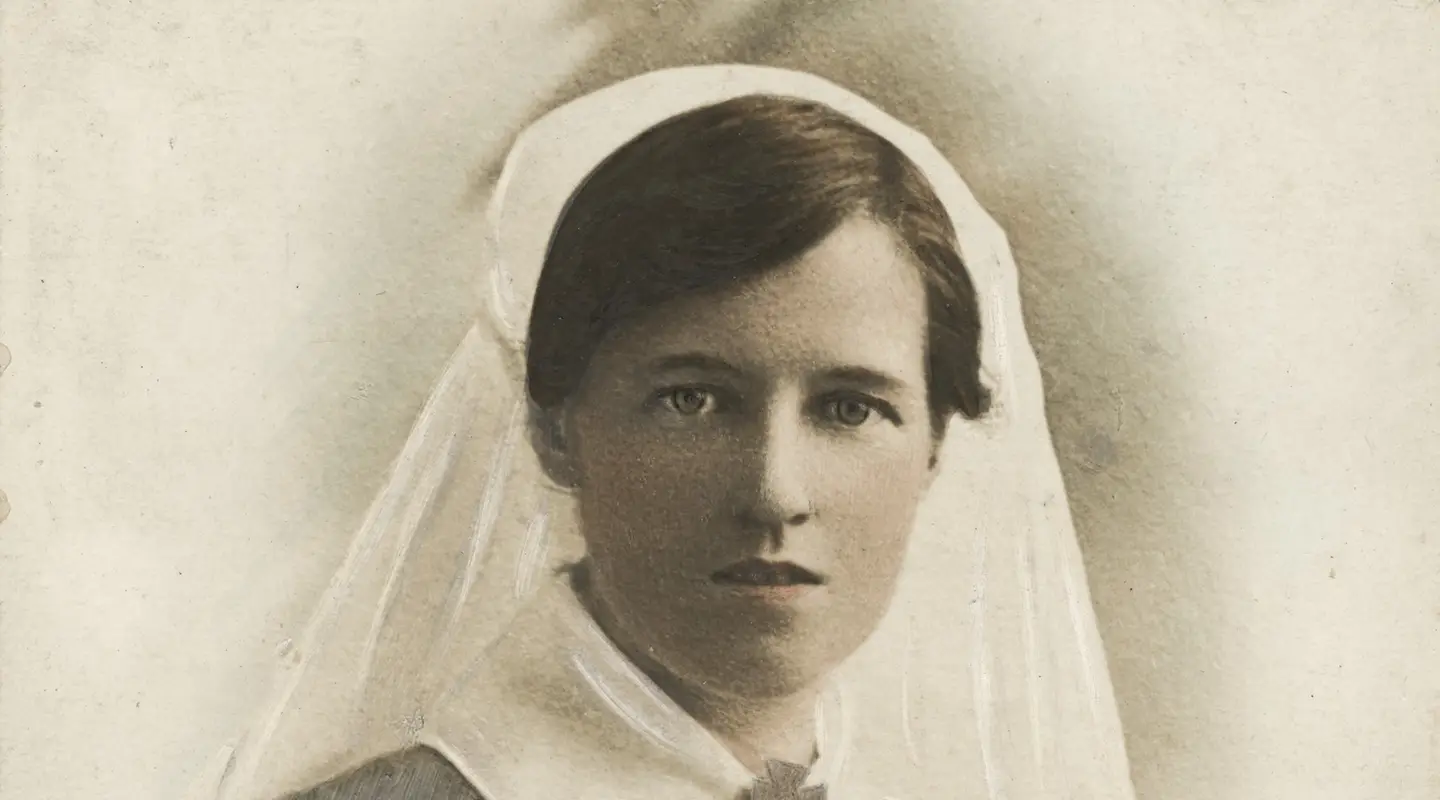The inspiring story of Sister Edith Blake, the only Australian nurse killed in action during the First World War.
Join Krista Vane-Tempest, Voluntary Guide at the Memorial, as she reveals the inspiring story of her great-aunt, Sister Edith Blake.
Through Edith’s 138 letters from the frontlines and her 1915 diary, Krista reveals a touching story of resilience, dedication, and sacrifice, highlighting the vital role nurses played during the war.
I’m Krista Vane-Tempest, I grew up in the NSW country, my father was a teacher but he grew up in Sydney and his aunt was Sister Edith Blake, so therefore she’s my great aunt.
Edith Blake was a nurse from Sydney who became the only Australian nurse killed in action in the First World War.
In 2011, we found the 138 letters that Edith had written home from the First World War. So at that point I got really interested and started doing more research around them so that we could get a better idea of what Edie’s war experiences had been like.
I even snaffled Edie’s 1915 diary that she’d written home from the war and I felt like we’d got to know her and once we started reading those letters I felt like I got to hear her voice.
So Edith was the eldest of three sisters, she was born in 1885. She trained to be a nurse in the early 1900s and it turned out that she had applied to Australian Army, but the Australian Army – at that point – didn’t really know if it needed nurses. Not by any direct choice of her own she ended up serving with the British Queen Alexandra’s (Imperial Nursing Service).
She was energetic, she had a good sense of fun, and you know she even writes about playing snowball fights with other nurses on the decks of hospital ships and things. She wrote home some jokes, you know things that she thought would amuse her family, she would write home. She was conservative but she was practical, she was resilient. You could see how hard that she worked, that she was really proud if she got any praise from the matron or from the doctors. It was actually suggested that a First World War nurse could do more work in one year, than a civilian nurse at the time could do in a lifetime. So it made them work even harder, you could see her sort of rising to that occasion.
On the 26th February 1918, His Majesty’s Hospital Ship Glenart Castle left the harbour in Newport, Wales on its way through the Bristol Channel over to France to pick up wounded men. So she was on a hospital ship that was in waters where the Germans had said that they would leave them as protected ships. A little bit before 4am, when the crew were about to change shift, they were torpedoed by a U-boat – a German submarine.
So the Glenart Castle had been carrying, we believe, 182 crew and medical personnel and 153 of them died. That included all 8 nurses.
Her story highlights the fact that the other more than 30 Australian nurses who died in the First World War died of illness and disease. It represents that devotion to duty that all of the nurses had.
So the last letter was written at sea: “I will write home as soon as we get to Avonmouth or wherever we land, unless we strike a torpedo instead…I wonder how long it will be until I come back to the dear old coast. Much love from Edie”
So Edie’s letters and military photos the family has donated to the Australian War Memorial. So I’m glad that she’s here and sometimes when I’m bringing groups through the First World War gallery I do stop here and have the opportunity to show them Edith’s photo and Dead Man’s Penny and tell them a little more about Edith Blake’s War.
